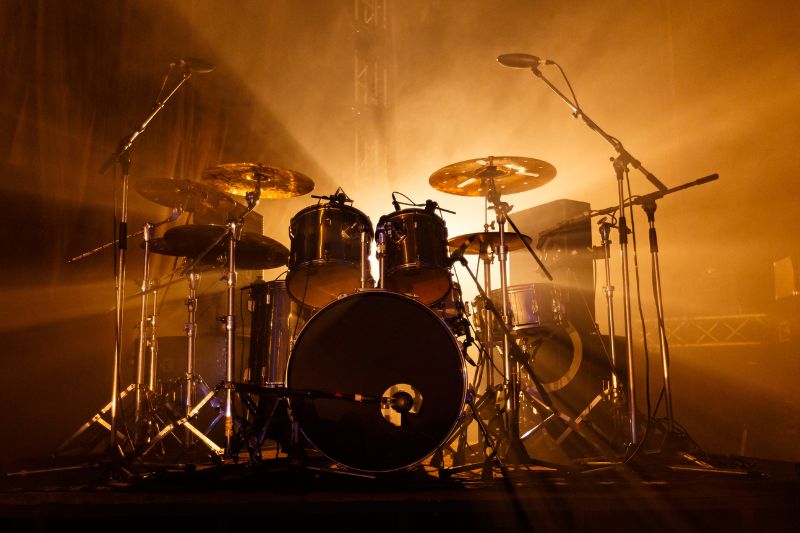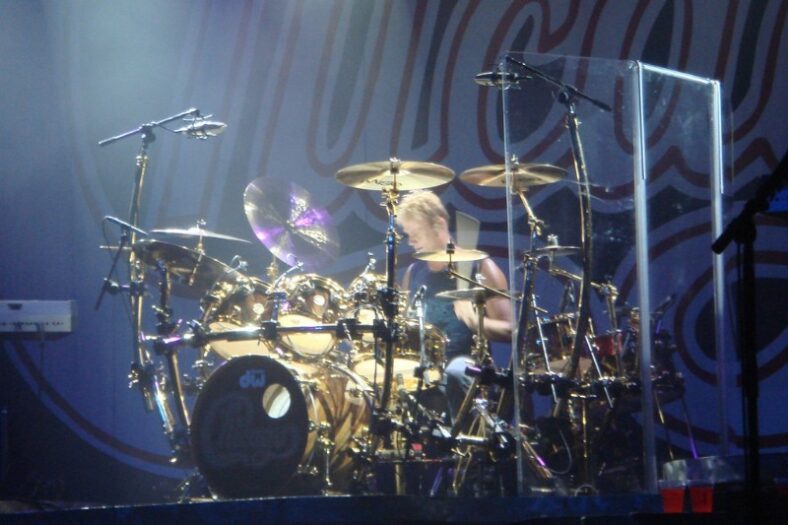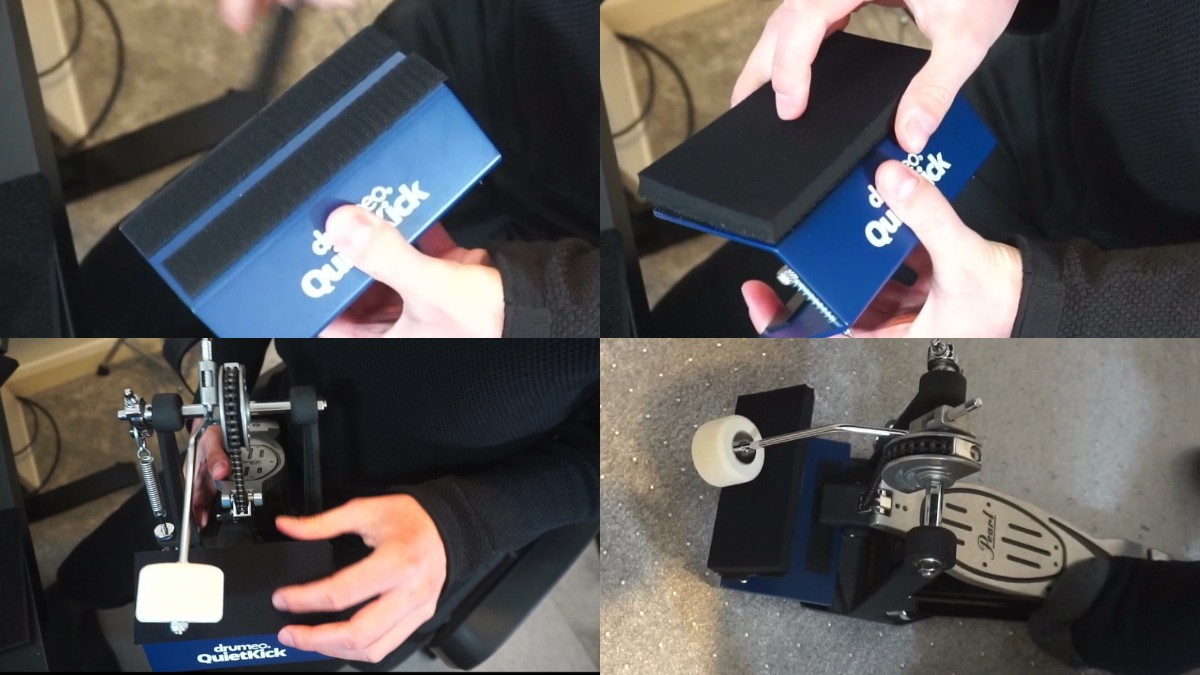Why Do Drummers Sit Behind Screens?

Drum screens, or drum shields, are large pieces of glass made of plastic or acrylic and mainly exist for two reasons. Firstly, reduce the volume of the drums so that they won’t overwhelm the volume of other instruments. Secondly, to prevent other microphones on stage from picking up their sounds.
Drummers sometimes set up drum shields in front of them, as you may have noticed on more than one occasion. This is very common in churches and smaller venues. The question is, why do drummers do this? What is the main benefit? Which factors determine if a drum screen is needed? Let’s find out.
Contents
What is a Drum Screen/Shield and why is it used?
A drum screen (or drum shield) is a type of screen, typically made from acrylic or plexiglass, that is placed around a drum kit to help minimize the volume of the drums heard by other musicians and the audience when performing live in smaller venues. In addition to isolating the sound and volume of the drums so that they don’t overpower the other instruments, they serve as a way to prevent other microphones on stage from picking up the drum sounds.
Why smaller venues?
Everyone will benefit from drum shields in churches or venues with less than 300-500 seats. Because the venue is small, so must be the stage itself. In addition, carefully positioning the microphones for vocals, guitars, other instruments, and drums, so you get the best mix, proved impossible. The vocal microphone will always pick up the drums, in some cases, even e-drum kits. So, the solution? Drum shields.
Besides churches and small venues, theaters and venues designed for good acoustic sound also have this problem with drums. Imagine setting up a drum set in a venue with 750 seats, acoustically designed so that you can hear the person on stage talking quietly. Now, imagine, instead of talking quietly, playing the drums with all the energy that a live performance brings. It would be louder than you being in the actual room with the drummer.
Drum shields give sound engineers a means to block/deflect the sound of the acoustic drums, and notice that I didn’t say absorb because plexiglass or acrylic do not actually absorb any sound. They also give the drummer the freedom to play as dynamically as he or she wants.
Do Drummers Like Drum Shields?

We know that sound engineers love drum shields, but what about the drummers? Well, everyone has a different opinion. Some drummers feel enclosed and left out, and some even feel like out-of-control “sound maniacs” that must be caged to play with proper dynamics.
Others (and this is the more popular opinion) love the drum shields. Most drummers love to play freely behind a drum shield without anyone (most likely a sound engineer) telling them to play softly on the cymbals and maybe hit the snare harder, therefore not appreciating the hours they have spent practicing drum dynamics.
Downsides of Using Drum Shields
I’ve talked a lot about the pros of using drum shields, but they also have some cons, and it’s better for you to understand them before investing in improving the sound of the drums in a live performance setting.
Even though there are a lot of different types and sizes of drum shields, more often than not, being behind these can get very hot, very quickly. You’ve probably never tried this (or at least I hope you haven’t), but try air-drumming for 5 minutes in a closed car, breathing heavily on the windshield. Actually, I take that back, don’t try it. Just trust my word on it, it’s pretty bad.
Also, I touched briefly on this before. Some drummers feel “disconnected” from the audience when they play behind big screens made of glass. Something like drum shields, to some, can break the experience of delivering the sweet emotions that you sweat through on stage.
Are Drum Screens/Shields Expensive?
As with almost everything in the music world, you get what you pay for. This, of course, means that the more expensive the drum screen/shield, the better. Naturally, it’s not just the material but the thickness, in general. Some drum shields include deflectors and can even completely encase the drum kit for maximum isolation.
Depending on your needs and how much you want to isolate the sound, what material is used, thickness, and features, drum shields can cost anywhere from 200-300$ up to 10,000$.
Conclusion
One way or another, a piece of hardware, such as screens or drum shields, is almost mandatory for a great mix of live performances. If the cons outweigh the pros, there are many options to block the sounds getting to the other mics, but drum shields are the most popular and they do the job best.
Tris Imboden Image by: Ken Young, CC BY-SA 3.0, via Wikimedia Commons







